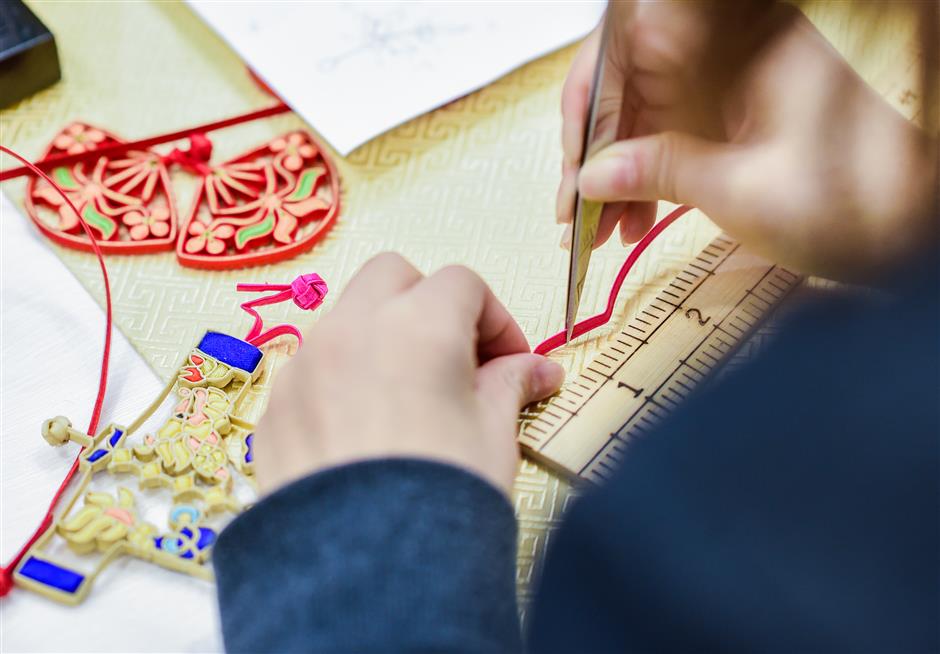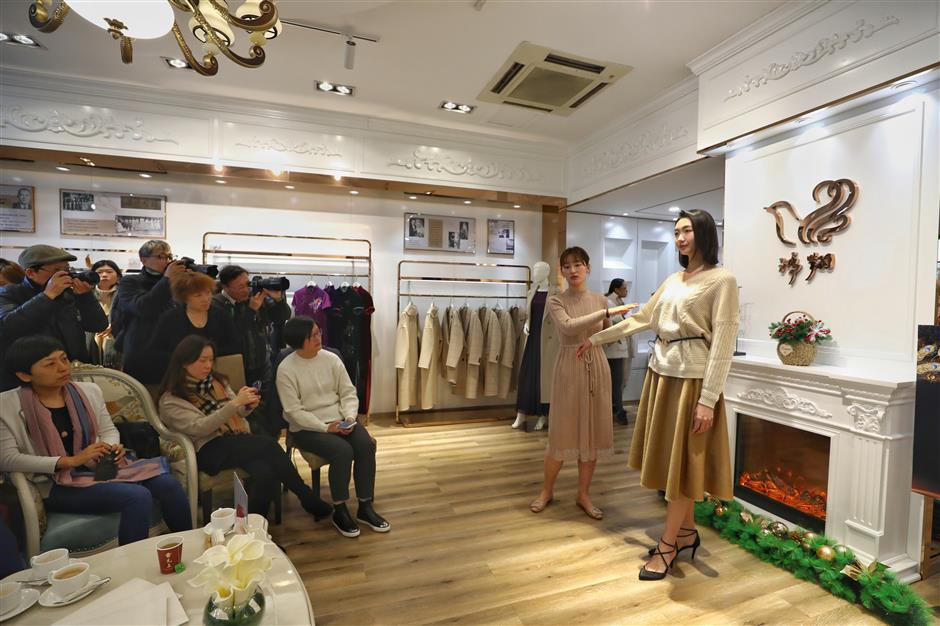Old brands meld traditions, modern tastes

Longfeng offers lessons in the skill of making traditional pankou.
Venerated old brands have to move on with the times to survive in an era of online retailing, and the historical brand shops on Shaanxi Road N. are no exception.
This year during the “Double 12” shopping spree, they launched promotions and interactive activities to keep their profiles in the public eye.
The 300-year-old Leiyunshang traditional Chinese medicine pharmacy offered promotions on its online mall, while its brick-and-mortar store served free tea and healthy snacks to customers.
“Instead battling against online retailers, we should embrace online alternatives,” said Li Xiaoxin, manager of the store. “Here in the store, people can have serious conversations about traditional Chinese medicine and try our products. After the visit, they can buy our products through our online store.”
Shaanxi Road N. is more than shop fronts with things to sell. People are attracted there by the variety of experiences on offer.
At Longfeng Cheongsam, master tailor Jiao Yigang gives lessons showing visitors how to make cheongsam buttons called pankou and frog fasteners.
Longfeng, in operation for more than 80 years, is synonymous with masterful cutting and delicate embroidery, including the unique skill of making pankou, sometimes described as the “eye” of the cheongsam.
“Beginners usually start by making pankou, which requires patience and care,” said Jiao, who has been making the classic Chinese dress for nearly 40 years.
A “student” surnamed Zhang, said, “I thought it would be simple because it was just some stitching. But when I tried it, I found that it was really hard. But I really enjoyed the experience. It was fun.”
Gao Peijing, assistant to the general manager of Longfeng, said cheongsam-making courses are always extremely popular.
“Since the latter half of last year, we have run six classes, each with 12 students and three or four tailors,” she said. “For Just 600 yuan ((US$87), you can learn from veteran tailors everything from stitching and cutting to finally finishing.”
Younger women have become important customers because the vintage style is enjoying a bit of a renaissance. Longfeng’s goal is to become an iconic haute couture house.

Pankou, the handmade buttons on the traditional cheongsam dress, require patience and care to make. The buttons are called the “eye” of the cheongsam.
Recently, it launched a set of coasters, with pankou in the middle.
“The Palace Museum recently started selling lipsticks that are very popular,” Gao said. “It shows the value of history. We are considering more products that allow people, especially newlyweds, to buy customized gifts.”
Few foreigners come to Longfeng.
“We welcome foreigners, but we don’t speak English very well and our tailors don’t speak it at all,” Gao said. “If there were a translator, we would consider opening a cheongsam class to foreigners.”
The Shaanxi Road N. clothing shop Humsuit, built in 1929, held a small wine party at the store recently. Ten young men tried on new jackets that add fashionable elements to the traditional Yat-Sen suit.
“We want to cater to younger customers,” said Chen Weifu, general manager of Humsuit. “Young people don’t want to be restricted in a traditional suit. So, we’ve changed it from a formal suit to a casual jacket.”
Hongxiang, a 101-year-old pioneer in Chinese fashion, was the first couture house in China to hold a fashion show, attracting celebrities like Ruan Lingyu, “China’s Greta Garbo,” and movie queen Hu Die to the catwalk. About 90 years later, it is still one of only a handful of historical brands to hold fashion shows.
At a recent show, Hongxiang unveiled its latest collection.
According to master tailor Chen Jian, the only dress of value is one made by hand. “Handmade clothes are alive,” he said. “They have soul.”
One customer who attended the fashion show was pleased by the new collection.
“Actually, I’d heard of Hongxiang but I never bought anything there,” said Chen Aili, 45. “The show really impressed me, and I decided to buy a cashmere coat. Hongxiang’s clothes look as elegant and stylish as Max Mara.”

Hongxiang stages fashion shows of its latest designs.

Humsuit, a Mao suit maker, now adds fashionable elements to its traditional jacket to woo young people
Gu Lu is a shoemaker at Dameihua, where cloth shoes in a style dating back more than 3,000 years are made and sold. She was happy to demonstrate the craft to customers one recent day.
Established in 1904, Dameihua’s handmade shoes with cloth soles and embroidery may look old-fashioned, but they are becoming popular with young people embracing retro styles.
“Our shoes are really comfortable,” Gu said. “Young people wear them at the office or when driving.”
Old doesn’t have to mean stale.
“We’re doing a lot to show to the public that these brands and their stores are alive and still competitive,” said Li Xijun, vice general manager of Kaikai Group, parent company of many brands.
A 230-meter section of Shaanxi Road N., between Nanjing and Weihai roads, reopened in September after a six-month renovation. It has 17 shops selling venerated brands.
According to Kaikai, the revenue at some stores has increased by more than 60 percent since the renovation.
















